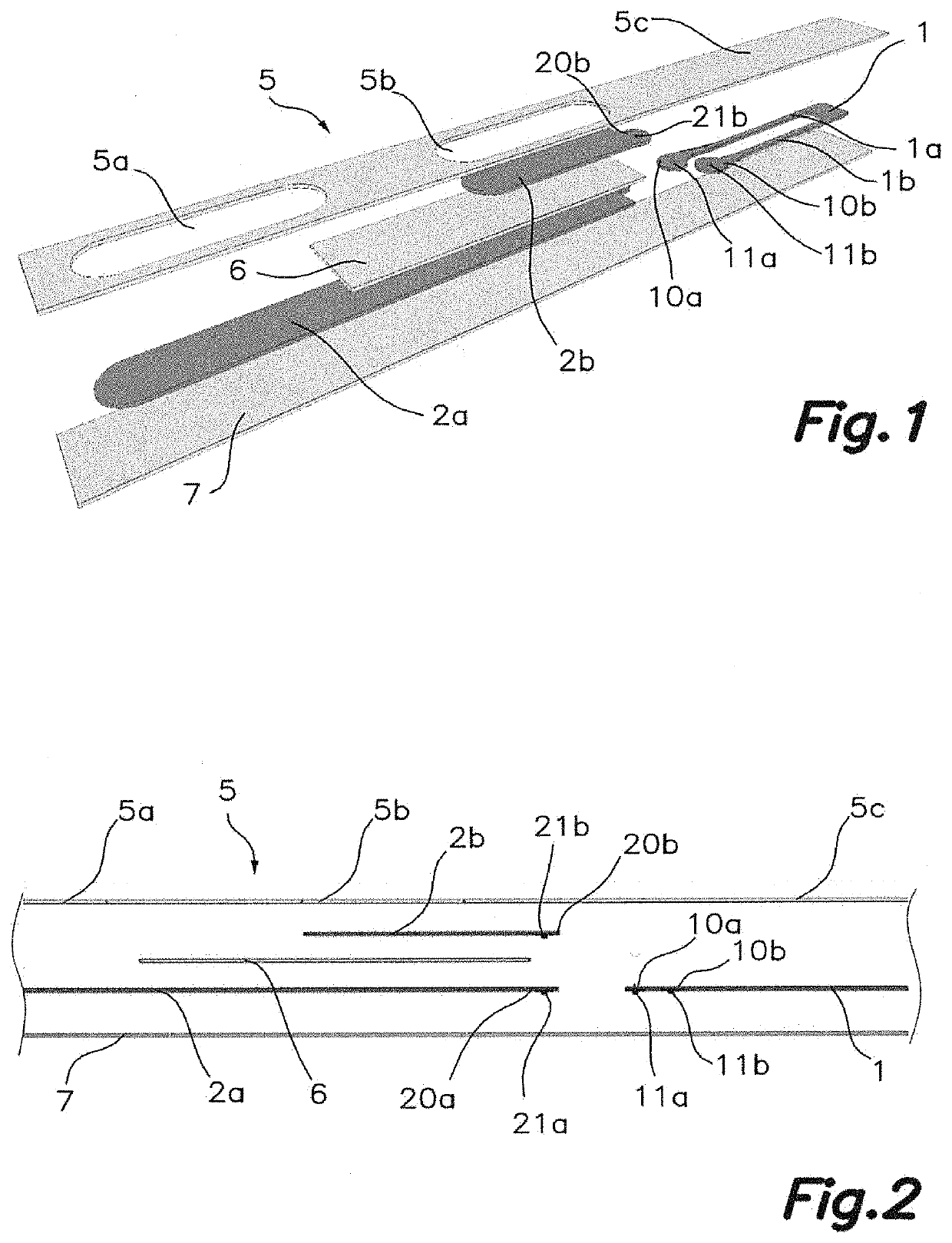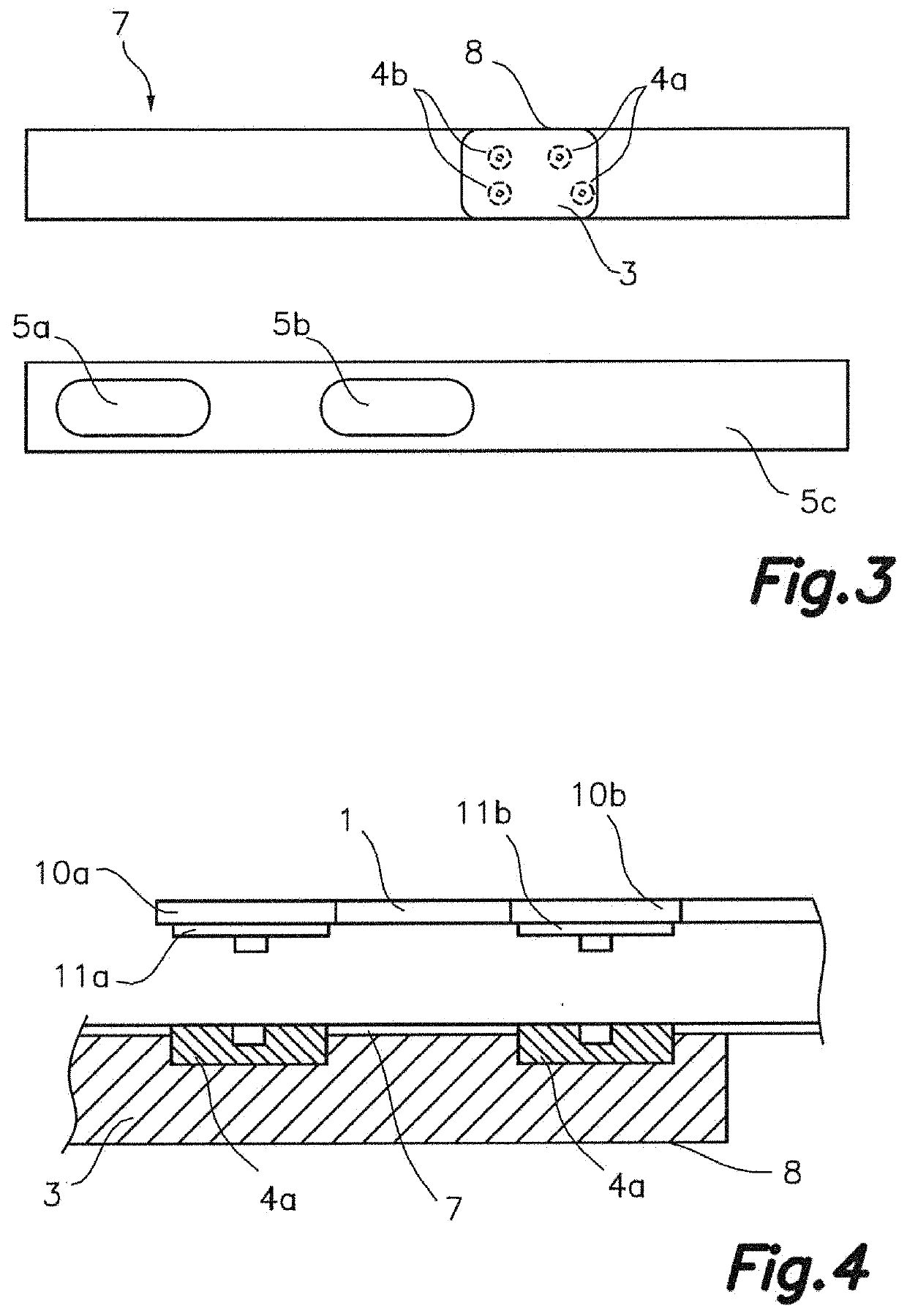Wearable thoracic element for detecting, monitoring and reporting the physiological status of an individual
- Summary
- Abstract
- Description
- Claims
- Application Information
AI Technical Summary
Benefits of technology
Problems solved by technology
Method used
Image
Examples
Embodiment Construction
[0052]The foregoing and other advantages and features will be more fully understood from the following detailed description of an embodiment with reference to the accompanying drawings, to be taken in an illustrative and not limitative, in which:
[0053]FIG. 1 illustrates a perspective view, of one possible embodiment, of the different elements that comprise the wearable thoracic element in the form of a band although, the casing 8 containing the processing unit 3 and the terminals 4a and 4b, where the first sensor 1 and the second sensor 2 are connected, are not shown as they are positioned on the front side of the covering layer 7.
[0054]The first sensor 1, which is a laminated strain gauge, must be located on an elastic portion 5c of the support layer 5, if said support layer 5 is made up of several materials and not all of them are elastic and therefore there are different portions which comprise the support layer 5.
[0055]That is why, in order for the first sensor 1 to be able to e...
PUM
 Login to View More
Login to View More Abstract
Description
Claims
Application Information
 Login to View More
Login to View More - R&D
- Intellectual Property
- Life Sciences
- Materials
- Tech Scout
- Unparalleled Data Quality
- Higher Quality Content
- 60% Fewer Hallucinations
Browse by: Latest US Patents, China's latest patents, Technical Efficacy Thesaurus, Application Domain, Technology Topic, Popular Technical Reports.
© 2025 PatSnap. All rights reserved.Legal|Privacy policy|Modern Slavery Act Transparency Statement|Sitemap|About US| Contact US: help@patsnap.com


